Fujikawachi Tea Plantation
Author: Richard Perkins
Photos/Videos Taken: 2022/11/12
Address: Fujikawachi, Ube,
Yamaguchi,【754-1313】
Concerning tea in Japan, Kyoto Prefecture is the most notable. Tea from Kyoto Prefecture is very popular with both Japanese and foreign tourists. There are many speciality tea shops which large numbers of people visit to try traditional 抹茶 (matcha—a type of powdered green tea). However, Kyoto Prefecture isn’t the only prefecture in Japan that produces tea. There are many regions where you can enjoy high-quality tea; there are large tea plantations all across Japan. One region of Japan that produces tea is the Chūgoku region. In Ube, Yamaguchi Prefecture is the Fujikawachi tea plantation. Here, green tea known as 小野茶 (ono-cha) is produced.
It’s unclear exactly when tea was first produced in Yamaguchi Prefecture, but it’s said that the production of tea flourished under the lead of the Chōshū Domain (Yamaguchi Prefecture) in the Meiji period (1868-1912). What was then known as 周防茶 (suō-cha) became a well-known type of tea across the country. Nowadays, ono-cha (also referred to as 山口茶—yamaguchi-cha) is a tea with little history behind it. In 1958, the individual tea plantations owned by farmers in Ube City were all made into one tea plantation. Over about twenty years, the tea plantation was enlarged into the tea plantation that stands today. Excluding tea plantations spread out over several areas, at roughly 1,000,000 square meters, the Fujikawachi tea plantation in Yamaguchi Prefecture is the largest in the country.
Those fond of Japanese tea may already know this, but big tea plantations across Japan sometimes have observation decks. At the Fujikawachi tea plantation, there is an observation deck just above the plantations themselves. Here, you can get a superb panoramic view of the entire ono-cha plantation. The deep green leaves make for some beautiful scenery.
When looking out over the Fujikawachi tea plantation, you’ll notice that several large fans have been set up. These are known as 防霜ファン (bōsō-fuan), and you’ll find them at various vegetable plots and so on across Japan. Used in the cold winter months, farmers set up these fans to prevent their crops from freezing. The fans prevent frost and whatnot from building up on the crops, helping them grow all year. As tea leaves are grown year-round, fans are set up in the tea plantations, too, to prevent them from dying when temperatures drop. Those at the Fujikawachi tea plantation have done what they can to ensure that tea leaves continue growing even when temperatures drop.
In Spring (from the end of April to the beginning of May), they produce what is known as 新茶 (shin-cha). This is tea made from the first harvest of tea leaves each year, and if you visit a tea plantation just before this harvest, you’ll be able to enjoy the scenery that is an abundance of these fresh, untouched tea leaves. We highly recommend visiting the Fujikawachi tea plantation and viewing the ono-cha this time of year. As mentioned above, excluding tea plantations spread out over several areas, the Fujikawachi tea plantation is the largest in the country. Being some distinctively Japanese scenery, the tea leaves grown in Yamaguchi Prefecture are one sight you’ll want to check out.
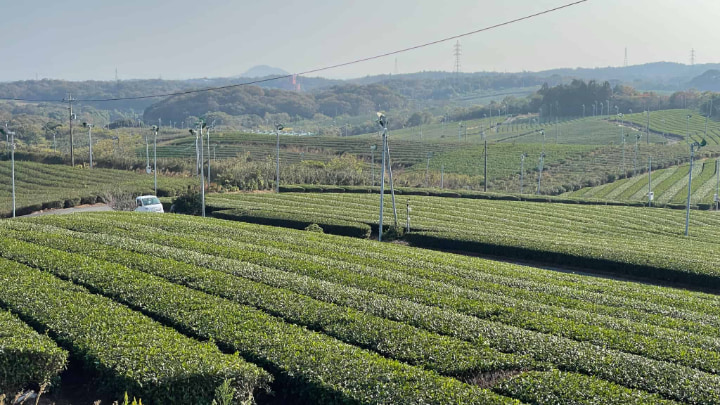
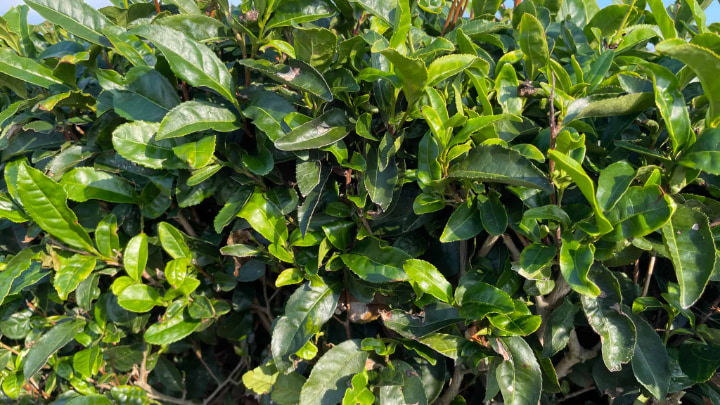
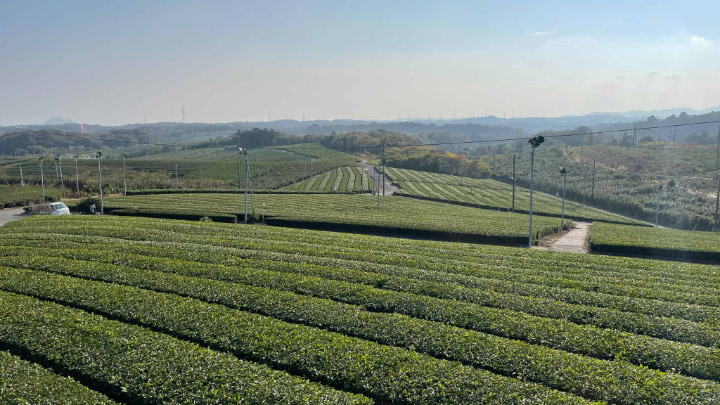
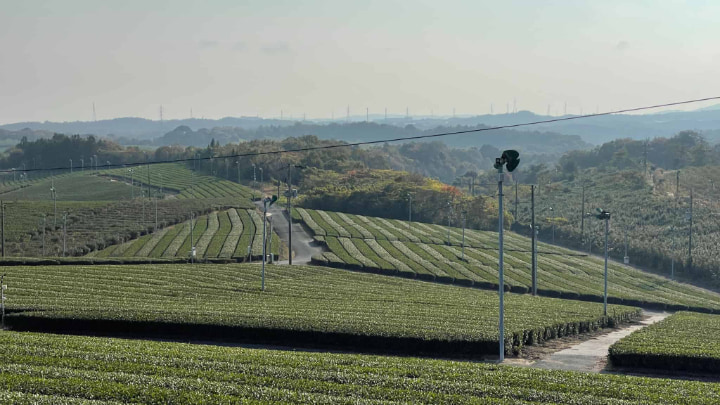
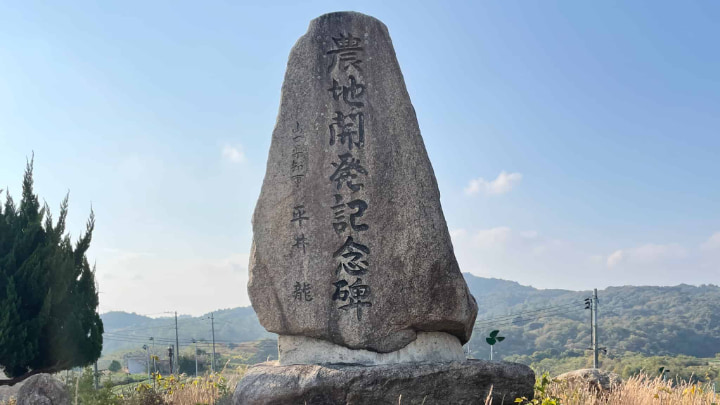 ]
]
This stone, set up near the observation deck, commemorates the development of the farmland here. It’s unclear exactly, but it is (most likely) referring to the development of the Fujikawachi tea plantation.